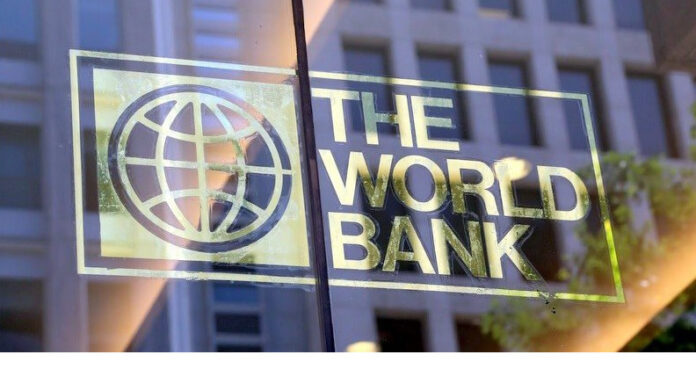Mahmood Pradhan chats with Richard House and David Lubin on the outlook for this group of countries
Emerging market assets have proved remarkably resilient over the past year, confounding more dire expectations at the outbreak of the COVID-19 pandemic. The very large liquidity injections from central banks in advanced economies have undoubtedly helped. But some emerging market economies have also found more policy space, including turning to unconventional monetary policies that many would have thought available only to advanced economies. This crisis will, however, leave scars. Debt burdens of emerging markets and low-income countries are rising to unprecedented levels. Will more countries need financial assistance when the tide of global liquidity turns? And will private investors be willing to share the burden?
Two veteran market players—Richard House, chief investment officer for emerging market debt at Allianz Global Investors, and David Lubin, head of emerging market economics at Citibank—explain why the maturity of this asset class helped limit the fallout and bodes well for its resilience and return to a more normal global liquidity environment. But they do see a need for the private sector to share the burden of adjustment in some countries. They also call for the public sector, including the IMF, to help countries take advantage of the growing demand for debt issuance that complies with environmental, social, and governance standards.
F&D: Are you surprised by how well the emerging market asset class has fared during the pandemic?
RH: No, for two reasons. First, emerging markets have become a much more diversified asset class. Second, ownership now is mostly domestic. When I started out, 25 years ago, there were just a handful of countries to choose from, and foreign investors like ourselves dominated the asset class. Today, there are more than 80 countries to choose from, and average ownership of foreigners is about 20 percent, including corporate debt. Large domestic ownership limits contagion and has made the whole asset class more resilient.

RICHARD HOUSE
DL: The scale of the health crisis was so devastating that there could have been any number of outcomes. But the collapse of US real interest rates starting in late March was critical—40 years of history teaches us that when that happens, capital is pushed toward emerging economies. For the whole of 2020, Eurobond issuance by emerging economy borrowers was some $800 billion, more than a 10 percent increase over 2019. This was particularly surprising because many emerging economies saw their external financing needs go down due to the recession-induced reduction in their current account deficits.
F&D: What will happen when long-term yields begin to normalize in advanced economies and central banks start to unwind asset purchases?

DAVID LUBIN
DL: Rises in US interest rates have been a threat to emerging markets’ capital flows since the 1970s. A recent small increase in 10-year US Treasuries caused some turbulence. But by any historical standards, a 10-year US Treasury yield that remains negative in real terms is absurdly low. As long as that remains the case, the threat of significant capital outflows should be contained.
F&D: You both think emerging markets are more resilient for being less dependent on foreign investors. But are foreign investors also better at differentiating between countries? Or has the large-scale policy response from advanced economies muddied the waters?
RH: Almost all asset classes collapsed early last year, then bounced back strongly. Liquidity injections have masked some problems, but not everywhere. While a rising liquidity tide has certainly lifted many boats, macro and political drivers ultimately drive asset prices. There has been reasonable differentiation, certainly in sovereign credit and foreign exchange.
DL: The biggest surprise last year was how almost all emerging economies were able to ease monetary policy. This was significantly facilitated by the Fed, which basically said, in March of 2020, “Leave it with us; we’ve got this covered.” That was a very powerful signal that monetary policy could come to emerging markets’ rescue as well. Fiscal policy turned out to be more difficult because many countries did not have the firepower of advanced economies.
F&D: If long-term rates are moving up because of stronger US growth, could that offset the impact of higher borrowing costs?
DL: Under normal circumstances, I would say no. When US monetary conditions tighten, I think emerging economies lose more through capital outflows than they gain from more exports. The reason is that in recent years, the main driver of global investment trade and commodity prices has not been the United States, but China. Emerging markets’ capital accounts are impacted by decisions taken in Washington; their current accounts are more influenced by Beijing.
The ideal combination would be a weaker US, with low interest rates pushing capital toward emerging markets, and a stronger China boosting trade and investment. Should the United States be more able to shape global investment growth with President Biden’s infrastructure plan, that would help emerging countries, particularly if China refocuses toward consumption.
F&D: Emerging markets used unconventional policies more actively. Does this suggest some countries have more tools in their arsenal than previously envisaged?
RH: It’s very hard to generalize: there have been several different forms of quantitative easing. But compared to only a few years ago, every central bank has been unconventional. The narrative that emerging countries cannot do quantitative easing or all hell breaks loose is long past.
DL: There is a lot of diversity. India, for example, has successfully announced expansionary fiscal policy together with caps on bond yields. If others tried that, there would be massive capital outflows. The difference is often in markets’ confidence about each country’s growth potential, but also how open their capital account is.
F&D: How concerned are you about mounting debt burdens? Can emerging markets, and especially low-income countries, grow their way out of debt?
RH: Coping with COVID-19’s financial impact is a global concern. An immediate concern for me is the disparity in growth rates across countries. Sadly, vaccine distribution in emerging economies will be much slower than in advanced ones. Markets are not paying attention to that disparity. Although emerging economies will bounce back, I don’t see debt-to-GDP levels coming down to pre–COVID-19 levels for many years.
DL: I would agree. Accumulating large debt in foreign currency is much more dangerous. However, we’re still far away from that. Indicators like the external debt service ratio and debt to foreign exchange reserves ratio don’t look too stretched in historical terms. Low US interest rates will help keep the debt service cost low. The common denominator of the 1980s and 1990s crises was emerging economies’ lack of dollar assets. During the last 20 years, many of them made strenuous efforts to accumulate foreign currency reserves. The domestic debt problem is more serious in some countries. Investors and the IMF have very little experience and don’t know what such a crisis might look like. Our experience in the last 40 years has been mostly with foreign debt.
RH: The biggest difference is that pegged exchange rates have been thankfully consigned to history. So I don’t think there’s ever going to be another big systemic emerging markets crisis again. Maybe in some countries at the corporate level, but certainly not at the sovereign level.
F&D: Do you expect many countries will need financial assistance from the IMF or other multilateral institutions? And can the private sector share the burden of adjustment?
RH: We have seen record issuances from emerging markets, sovereign and corporate, in the first quarter of 2021, despite a pretty sizable repricing of US Treasuries. Some countries facing liquidity or solvency issues will need more assistance from the Fund and potential private sector participation in restructurings. They are well known to anyone with a basic grasp of sovereign balance sheet analysis. I do not think there will be contagion. There was no contagion from the most recent defaults or restructurings in Argentina, Ecuador, and Lebanon. Why would it be different now? The private sector should definitely participate when debt is clearly unsustainable.
DL: Portfolio managers are paid to do risk assessment. The IMF first introduced its lending into arrears policy in the 1980s. If private creditors still think the IMF will bail them out, they’re not doing their job properly.
F&D: Can emerging markets and low-income countries benefit from the growing demand for environmental, social, and governance–compliant borrowing (ESG)?
RH: It’s a nascent asset class, but with huge potential. At an estimated $16 billion, it’s still only 4 percent of total funds under management in emerging markets. All investors are demanding them now—three-quarters of my client meetings are about our strategies on these investments.
The IMF can play a role in helping smaller countries get involved, particularly given its commitment to helping them achieve the UN Sustainable Development Goals. There are now internationally used principles on green, social, and sustainable bonds—and lots of public and private data available. The Fund can help in monitoring engagement and reporting.
F&D: Should the IMF focus on helping countries develop capacity to issue green bonds, or on monitoring and enforcement?
RH: Investment banks are eager to help countries issue these bonds. The Fund could help more on monitoring and engagement, and especially on social and governance aspects. It has been encouraging that IMF reports have covered these issues. Engagement with countries is critical. It’s the question investors always raise.
DL: It is a complicated area because money is fungible. A country says it is raising money to invest in this green project or to build schools in rural communities. How can we know for sure?
A second problem is that ESG ratings are highly correlated to per capita GDP. I worry that, as green and socially responsible bonds become more entrenched in global markets, there could be perverse consequences. Capital flows to lower-income countries could be at risk.
F&D: But isn’t that exactly the point, to exert economic pressure on governments to abandon bad practices?
DL: Investors are used to making risk-based assessments of ESG. Social and governance aspects have always been part of the analysis, because they are part of credit risk. But values-based investing is increasingly the case. “This country treats its journalists terribly; I couldn’t possibly invest there until they sort this out,” for example. If that kind of thinking seeps into the investment process, I’m not sure who benefits. The leverage investors might have could end up perpetuating a situation.



